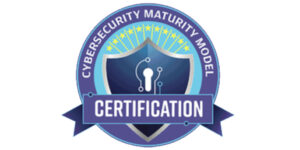Within the last few years, the topic of knowledge management has gathered a lot of interest in the corporate sector. Many companies today are dealing with more and more data that is being generated and collected, including trying to manage the resources and knowledge they have within their business. At the same time, while trying to implement knowledge management, technology changes and innovations leave business with a difficult task to implement new IT strategies in order to stay ahead of their competition and maintain their competitive advantage. Companies have to rethink their IT strategy and plan ahead to be able to meet the constantly changing demands without sacrificing their current business advantage or wasting too much time, money and resources on changing and redesign IT strategies for their enterprise.
While considering and designing IT strategies, companies are also evaluating knowledge auditing and how it can contribute to the overall formulation of IT strategies and their business goals. This paper analyzes this question as well as what the advantages of a knowledge audit approach are and how they can benefit the business goals, work environment and efficiency in the long run. Further this paper will evaluate the cost and benefits of a knowledge audit and what it will add to an IT strategy formulation.
What is knowledge management?
Knowledge management is a new branch of management for achieving breakthrough business performance through the synergy of people, processes, and technology. As IT becomes more of a commodity and endowed with more complex capabilities, there is need for re-focusing on strategic execution and how to implement this technology in conjunction with the employees, the business goals and the knowledge currently available in the business. In order to take advantage of the non-technical resources a business has, such as human knowledge and information sharing, businesses are re-focusing on these kind of human sense-making processes underlying decisions, choices, and performance and therefore considering a knowledge audit prior to designing an enterprise wide IT strategy (Malhotra, 2004).
In these increasingly uncertain and complex business environments and dynamically evolving performance outcomes are the key drivers of how smart minds use smart technologies to identify strategic opportunities and challenges. Information strategy executives observed some significant transitions over the last few years where IT acts as a lever of competitive advantage. The constant development and importance of e-everything phenomena with the emergence of Internet and electronic commerce are considered to be the key factors in business. Tied in with information collection, online networking and various portals that tie people and businesses across the world together allowing them to exchange information, create new innovations and provide a much better customer service and targeted sales by focusing on current economic and social needs make IT strategy in connection with knowledge management an important factor to succeed. Businesses therefore focus on knowledge audit prior to formulating an IT strategy for their entire enterprise (Malhotra, 2000).
What is a knowledge audit?
A knowledge audit is a sound investigation into an organization’s knowledge. It is a systematic and scientific examination and evaluation of the explicit and tacit knowledge resources within the company. This audit looks at what the organization’s knowledge needs are, the knowledge assets or resources it has and where are they located. It also allows for identification of existing gaps within the knowledge and how the knowledge flows around the organization. It also analyzes what data flow blockages are present and to what extent do people, processes and technology currently support or hamper the effective flow of knowledge. The report also provides factual evidence as to whether corporate knowledge value potential is being maximized. In this respect the knowledge audit measures the risk and opportunities faced by the organization with respect to corporate knowledge and provides an evidence-based assessment of where the organization needs to focus its knowledge management efforts (Brooking, 1999).
How does a knowledge audit relate to IT strategic planning?
The benefits of a knowledge audit in respect to IT strategic planning include helping the organization to clearly identify what knowledge is needed to support overall organizational goals and team activities, giving tangible evidence of the extent to which knowledge is being effectively managed and indicates where improvements are needed. It also provides an evidence-based account of the knowledge that exists in an organization, and how that knowledge moves around in, and is used. It also identifies pockets of knowledge that are not currently being used to good advantage and therefore offer untapped potential. Gaining useful information about knowledge and communication flows and networks, revealing both examples of good practice and blockages and barriers to good practice, including inventory of knowledge assets and allowing them to become more visible and therefore more measurable and accountable are other advantages that can be used by the IT strategic planners to implement in their plans.
What’s the process?
When performing a knowledge audit during or prior to an IT strategy, the IT strategy planning should include the outcomes of the knowledge audit. In order to do that, after the knowledge audit has been completed and the status quo of the business has been identified, the IT strategy will need to include and focus on the main attributes from the knowledge audit. These attributes and probably the main step will be to identify what knowledge the organization and the people and teams within it need in order to meet their goals and objectives. During this process it is important to address and identify main problems and challenges, and how to grant faster access to better knowledge throughout the enterprise. The next step entails drawing a knowledge inventory which includes counting and categorizing the organization’s explicit and tacit knowledge. In the case of explicit knowledge, this will include knowledge consisting of numbers, types and categories of documents, databases, libraries, intranet websites, as well as where the knowledge is stored. This includes its locations in the organization, and in its various systems, organization and access, how the knowledge resources are organized, how easy is it for people to find and access them including the purpose, relevance and quality of that data, why these resources exist, how relevant and appropriate they are for that purpose and if they are of good quality (e.g., up-to-date, reliable, evidence-based). It also includes the analysis of the actual usage by whom, how often, what for.
The knowledge inventory
The knowledge inventory provides the enterprise a snapshot of the existing knowledge assets or resources. During a strategy formulation a comparison of the inventory with an earlier analysis of knowledge needs, allows to identify gaps in the organization’s knowledge as well as areas of unnecessary duplication. In order to use knowledge audit as an advantage for IT strategy planning, it is also important to evaluate the knowledge flow within an organization. Focus should be placed on how that knowledge moves around the organization – from where it is to where it is needed. This knowledge flow analysis looks at both explicit and tacit knowledge, and at people, processes and systems and can be best obtained through a social network analysis. It is also important to evaluate what policies and practices currently affect the flows and usage of information and knowledge, for example are there existing policies on things like information handling, records management, web publishing? Are there other wider policies and practices that, while not directly related to knowledge management, act as enablers or barriers to good knowledge practice? An analysis of knowledge flows will allow the IT strategy executives to further identify gaps in the organization’s knowledge and areas of duplication. It will also highlight examples of good practice that can be built on, as well as blockages and barriers to knowledge flows and effective use.
Knowledge mapping
Once this information has been collected a visual knowledge map can be put together which is the representation of an organization’s knowledge. There are two common approaches to knowledge mapping. The first approach maps knowledge resources and assets, showing what knowledge exists in the organization and where it can be found and the second approach also includes knowledge flows, showing how that knowledge moves around the organization from where it is to where it is needed (Robertson, 2005).
Based on this factual and visual data a much more efficient IT strategy can be formulated which already includes the identified positives and negative processes within an organization. During the IT strategy design, the positive assets identified during the knowledge audit can be maintained or even improved to support a much more efficient work process, support employee learning as well as increase job satisfaction. For all negative aspects that have been identified during the knowledge audit, all necessary steps can be taken into considerations during the IT strategy design process on how to eliminate these, improve knowledge flow or allows an easier accesses to information to all employees. These positive and negative assets can be used by IT strategists planners and designers to implement a much easier and more efficient knowledge identification and creation system, allowing also for a more efficient collection and capture of knowledge, improved storage and organization of data as well as facilitating the sharing and dissemination of knowledge. In addition to that implementing the results from a knowledge audit into an IT strategy will also improve the application and use of knowledge as well as the archival and disposal. All this is very important in the IT strategy planning (Davenport & Prusak, 1998).
Knowledge management strategy
Overall, the advantages of a knowledge audit will improve the knowledge management strategy of a business by establishing exactly ‘where you are now’ and implementing that into the IT strategy. It also provides useful sources of how information and knowledge are accessed and by whom, including information about the value of knowledge management duplication of information and knowledge gathering activities across different departments or teams.
Given the significant investment in IT in most organizations and the uncertainty about the delivery of benefits from those investments the need for an IT strategy to deliver sound decision making over time has already been identified in the commercial sector. Therefore it is very important to make a strategy that will not only benefit the business short term, but also and mainly in the long term. A sound strategy needs to meet all set business goals and improve identified tasks. If the strategy is not properly designed, the objectives and goals cannot be met and thus cost businesses not only a lot of time and resources. It might also hinder them in maintaining their competitive advantage.
Impact on business success
Businesses need to realize that although knowledge audit might be a lengthy process and that there is not universally model for the knowledge audit process because of the dramatically varying structures, natures and circumstances of the organizations in which they are conducted, it is a vital necessity when considering implementing or designing a new IT strategy. Using the identified positive and negative results of a knowledge audit will bring the employees not only a more efficient work environment and therefore a better work efficiency, but also it will have a positive impact on the overall business processes. These positive impacts will affect the overall increased proficiency and efficiency as well as an increased degree of innovation and long term business success.
![]()
![]()





